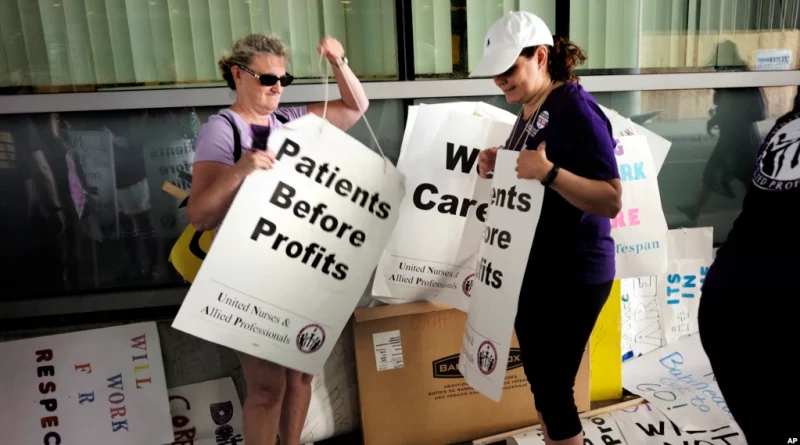Health workers on strike in the United States
Health workers on strike in the United States
About 15,000 health care workers in Minnesota didn’t go to work Monday to protest understaffing at hospitals.
The health care workers’ union says the shortage hurts patient care and drains health care workers. The union is negotiating a new contract with hospital management.
The Minnesota Nurses Association called the three-day strike one of the largest in U.S. history. The protest underscores the shortage of healthcare workers across the country, which is exacerbated by the COVID-19 pandemic.
The union claims that a new agreement has been under negotiation for more than five months, and that health care workers have been working without a contract for weeks.
“Hospital management has forced nurses to leave their post at the bedside by their refusal to address the staffing crisis,” said the negotiating union, adding that nurses are “overworked” because of staffing shortages.
The strike is expected to affect at least 13 hospitals in Minneapolis and St. Paul. Hospital Group, which controls the four hospitals where nurses are on strike, said it has asked the nurses’ union to participate in a mediation process to resolve the dispute.
“A qualified mediator can help the parties focus on the key elements needed to move forward together, but the health care workers’ union has declined all of our requests for mediation,” the Hospital Group website said.
Allina Health, which also runs the four hospitals where the nurses are on strike, said on its Web site that it is working hard to minimize disruptions to patient care, adding that it has been preparing for the strike for months.
The health care workers’ strike has received support from U.S. lawmakers in Washington, including Senator Bernie Sanders.
“Health care workers are the foundation of our health care system,” Sanders wrote on Twitter, calling for fair work schedules and higher wages.
According to the Bureau of Labor Statistics (BLS), U.S. health care employment is still below pre-pandemic levels. A Sept. 2 BLS report states that 37,000 fewer people are working in health care now than in February 2020.
